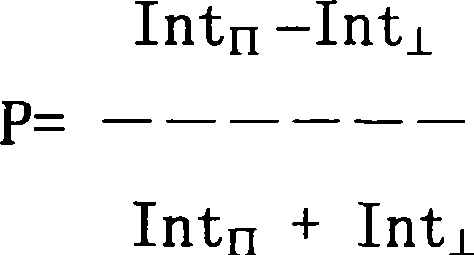T2r taste receptors and genes encoding same
A taste receptor and encoding technology, applied in the field of genes and cDNA, can solve the problems of lack of understanding of molecules and pathways that mediate sensory signal responses
- Summary
- Abstract
- Description
- Claims
- Application Information
AI Technical Summary
Problems solved by technology
Method used
Image
Examples
preparation example Construction
[0252] Preparation and screening of combinatorial chemical libraries is well known to those skilled in the art. Such combinatorial chemical libraries include, but are not limited to, peptide libraries (see, e.g., U.S. Patent 5,010,175, Furka, Int. J. Pept. Prot. Res., 37:487-493 (1991) and Houghton et al., Nature , 354:84-88 (1991)). Other chemistries for generating chemically diverse libraries can also be used. These chemicals include, but are not limited to: peptoids (eg WO91 / 19735), encoded peptides (eg WO 93 / 20242), random bio-oligomers (PCT eg WO 92 / 00091), benzodiazepines (e.g. U.S. Pat. No. 5,288,514), hydantoins and benzodiazepines And dipeptide heteropolymers (diversomers) (Hubbs et al., PNAS90: 6906-6913 (1993)), ethylene (vinylogous) polypeptides (Hagihara et al., J.Amer.Chem. Soc., 114: 6568 (1992)) , nonpeptidal petidomimetics with a glucose scaffold (Hirschmann et al., J.Amer.Chem.Soc., 114:9217-9218 (1992)), similar organically synthesized small molecule co...
Embodiment
[0267] The following examples summarize the isolated nucleic acid molecules of the present invention, and the corresponding polypeptide sequences to conceptual translations of the nucleic acid molecules. In the protein sequences provided here, the single letter X or Xaa refers to any one of the twenty common amino acid residues. In the DNA sequences provided here, the single letter N or n represents any of the four common nucleotide bases A, T, C, and G.
[0268] hT2R51 full-length cDNA (BAC AC011654) (SEQ ID NO: 1)
[0269] ATGTTGACTCTAACTCGCATCCGCACTGTGTCCTATGAAGTCAGGAGTACATTTCTGTTCA
[0270] TTTCAGTCCTGGAGTTTGCAGTGGGGTTTCTGACCAATGCCTTCGTTTTCTTGGTGAATTTT
[0271] TGGGATGTAGTGAAGAGGCAGGCACTGAGCAACAGTGATTGTGTGCTGCTGTGTCTCAGC
[0272] ATCAGCCGGCTTTTCCTGCATGGACTGCTGTTCCTGAGTGCTATCCAGCTTACCCCACTTCCA
[0273] GAAGTTGAGTGAACCACTGAACCACAGCTACCAAAGCCATCATCATGCTATGGATGATTGCA
[0274] AACCAAGCCAACCTCTGGCTTGCTGCCTGCCTCAGCCTGCTTTACTGCTCCAAGCTCATCC
[0275] GTTTCTCTCACACCTTCCTGATCTG...
PUM
 Login to View More
Login to View More Abstract
Description
Claims
Application Information
 Login to View More
Login to View More - R&D
- Intellectual Property
- Life Sciences
- Materials
- Tech Scout
- Unparalleled Data Quality
- Higher Quality Content
- 60% Fewer Hallucinations
Browse by: Latest US Patents, China's latest patents, Technical Efficacy Thesaurus, Application Domain, Technology Topic, Popular Technical Reports.
© 2025 PatSnap. All rights reserved.Legal|Privacy policy|Modern Slavery Act Transparency Statement|Sitemap|About US| Contact US: help@patsnap.com



